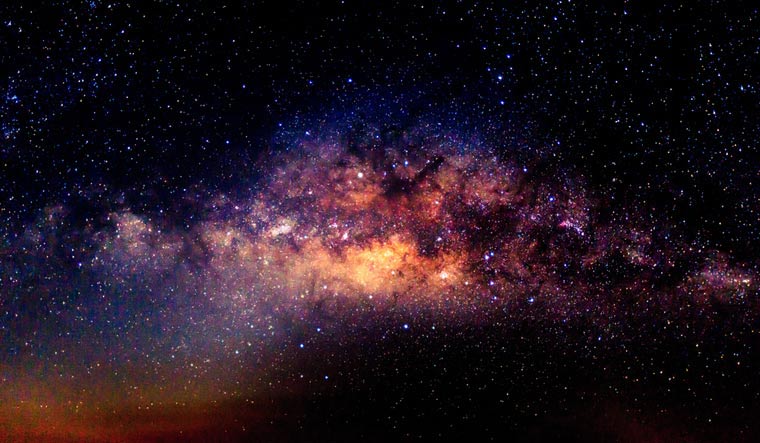Fixing the external boundary is a fundamental constraint faced by scientists while analysing the Milky Way. It is impossible to take peek as it is mostly dark matter, which is far beyond the existing telescopic view. Sending a spacecraft to observe it even from distance is impractical as it will take many millions of years to travel.
Now astronomers led by Alis Deason have done a study linked to the boundary of the underlying dark matter distribution to the observable stellar halo and the dwarf galaxy population.
The brightest part of the Milky Way, where the sun and other stars are illuminating, is some 120,000 light-years away. But scientists still do not know much about this region, including the number of spiral arms it has and also the location of the sun within it.
Beyond this stellar stream is a disk of gas, which extends more than 15 times its luminous spiral disk. It is difficult to understand our galaxy beyond this as it is a region of dark matter, consisting of only invisible particles. Though the stars that exist at these far-out distances make up most of the Milky Way’s mass, it is a daunting challenge to measure the diameter of the galaxy.
The new study finds that the Milky Way extend nearly up to 2 million light-years, which might be better assessment of the size of our galaxy. The study is expected to throw some light on the many galaxies that orbit the Milky Way.
In order to locate the Milky Way’s edge, the researchers conducted computer simulations of giant galaxies like the Milky Way. At about 950,000 light-years from the Milky Way’s centre, they could observe a plunge in the speeds of small galaxies in the neighbourhood of the Milky Way.
"There is great hope that future data will provide a more robust and accurate measurement of the edge of the Milky Way and nearby Milky Way-mass galaxies than the one we have presented here," the researchers write.
The study has been submitted to the Monthly Notices of the Royal Astronomical Society and is posted on arXiv.


